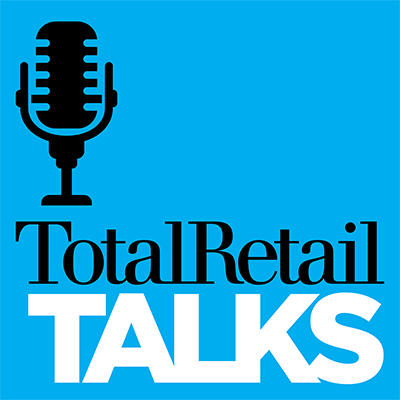AI bolsters marketing returns, weaker Diversity, Equity, and Inclusion investments and impact, and brand activism shifts to hot-button societal issues are among the results of the Fall 2023 edition. Results are based on a sample of 316 marketing leaders at for-profit U.S. companies, 96% of whom hold positions of VP-level or higher.
Marketer Optimism Rises, While Marketing Spending Dampens: Marketing leaders are more optimistic about the U.S. economy, but inflation and its attendant uncertainty continues to dampen marketing spending. Marketing budget as a percentage of company budget dropped to 10.6%, near pre-Covid levels. Similarly, marketing budget as a percent of company revenues dropped to 9.2% from 10.9% in Spring 2023. The percentage change in marketing spending over the last year came in at 2.6%, reflecting a 75% drop in growth in marketing spending reported one year ago at 10.4%. This is expected to increase to 7.2% growth in the next year.
Marketing Performance Strengthens: Marketing optimism may, in part, be buoyed by marketing performance, which remains strong relative to the pandemic. Profit growth has strengthened to 8% this year from 5.6% last year. Company sales growth, while continuing to slow since February 2022, remains positive at 10.8% and well above its pandemic low of 2.6%. Customer retention, customer acquisition, and brand value also increased, with brand value increasing dramatically from 6.3% growth last year to 9.7%.
Diversity, Equity, and Inclusion in Marketing Drops Off: Marketing leaders report growth in DE&I spend slowing to 2.3% this year, down from 10.7% just one year ago. Fewer marketers also expect DE&I to be a marketing priority over the next five years, with less than half believing it will be prioritized. One reason for this is DE&I is viewed as having weak returns. Rating on a scale of 1 (not at all) to 7 (a great deal) by various outcomes, the effects of DE&I marketing investments on stock returns (1.8), sales growth (2.5), customer retention (2.7), customer acquisition (2.8), employee attraction (3.5), and employee retention (3.5) are all weaker than one year ago.
Brand Activism Shifts Toward Hot-Button Issues: The top three social issues brands act for or against are LGBTQ+ equality (59.0%), Covid-19 (58.3%), and racial equality (53.2%). Actions related to abortion (+580%), firearms (+227%), and climate-related issues (+70%) had the largest increases since 2021 as these hot-button societal issues have intensified in the last few years.
AI in Marketing is Young, but Pays Off: While AI has been around for quite a few years now, it has only recently reached marketing use cases with 94.1% of marketers beginning to leverage this technology in the past three years and 60.4% for less than one year. The effect of AI adoption has been positive with marketing leaders reporting that sales productivity has improved by 6.2% and customer satisfaction by 7.0%, while marketing overhead costs have decreased by 7.2%. Content personalization and content creation take the lead as the top uses of AI in marketing. The use of AI to improve marketing ROI by optimizing the content and timing of digital marketing, for programmatic advertising and media buying, for predictive analytics to generate customer insights, and for targeting decisions are currently low with only roughly one third of marketing organizations using AI for these purposes. Within content creation, using AI tools for blogs and website content, social media, and email marketing top the list.
Digital Marketing Transformations Progress Slowly: Digital marketing transformations show progress post-pandemic as companies shift out of the nascent phase (from 27.1% to 8.8%) and into the emerging (from 52% to 54.2%), integrated (from 13.9% to 24.2%), and institutionalized (7% to 12.8%) phases of the transformation journey. There remains considerable opportunity for progress. Senior marketing leaders continue to drive 70% of transformations.
Impact of Influencers Continues to be Weak: While marketers’ current use of influencers (5.9%) has not reached the 7.5% high in June 2020 (pandemic), influencer usage in marketing strategy is expected to grow by 109% in three years to reach 12.2% of marketing budgets. B2B (which favor LinkedIn and company blogs) and B2C (which favor Instagram and Facebook) companies use influencers differently. Despite these investments, influencer contributions to company performance remain weak, likely due to a mix of measurement and management challenges associated with this marketing strategy.
Mobile Marketing Spending Weakens: Even though mobile spending dropped from 19% of marketing budgets in Spring 2023 to 15.7% in this survey, mobile spending is expected to grow by 72% in five years to 26.9%, surpassing the pandemic high of 23%. Marketers continue to report mobile marketing as contributing weakly to company performance (2.9 on 7-point scale) with “difficulty tracking the customer across the journey” as the top challenge. Despite high smartphone ownership, only 36% of companies report using an app. However, of this set, almost half (46%) report app revenue of greater than 5%.
Marketing Leaders’ Seat at the Table: Senior marketing leaders are more likely to be asked by their CEO and/or CFO to participate in company board meetings (4.7 on 7-point scale) than earning calls (3.7 on 7-point scale), although both remain at moderate levels. Marketing leaders report less pressure from CEOs and Boards over time, while indicating more pressure from CFOs. Consistent with this, “demonstrating the impact of marketing actions on financial outcomes” continues to be the top challenge for marketing leaders. Marketers only use experiments 36% of the time, pointing to an opportunity to improve this skill to demonstrate the impact of marketing.
Customer Focus Increases: Customer focus has increased in companies over the last five years with marketing leaders reporting a significant increase in the extent to which their companies are collecting, sharing, and using more customer information to shape and evaluate marketing strategies.
Marketing Job Growth Stalls and Outsourcing Increases: Marketing organization size growth increased by 5.5%, up from 3.4% in Spring 2023. This growth remains significantly smaller than the 2022 surveys when it averaged 13.7% for the year and remains below the long-term historical average for the survey since 2010, which is a 5.6% increase. Marketing leaders report that 20.2% of marketing activities are currently outsourced. Consistent with weaker job growth, the level of marketing outsourcing is expected to increase by 5% in the next year.
What Skills Marketers Expect to Hire Next Year: Marketing hires are predicted to grow at a faster rate in the next year (5.3% vs. 3.9% in Spring 2023). In prioritizing the skills of future marketing hires, marketing leaders cited the “Ability to pivot as new priorities emerge” and “Creativity and innovation skills” as top priorities, while “Financial acumen” is the lowest.
Direct-to-Consumer Marketing Intensifies: Marketing leaders report a large decline in the use of channel partners over the last decade, which is consistent with a finding from the Spring 2023 CMO Survey that 24% of companies added a direct-to-customer (D2C) channel over the last year.
Three different reports summarize these and other 31st edition results. The Highlights and Insights Report shares key survey metrics, trends, and insights over time, The Topline Report offers an aggregate view of survey results, and The Firm and Industry Breakout Report examines results by company sector, headcount, and sales.
The post New Results from the Fall 2023 Edition of The CMO Survey appeared first on The CMO Survey.
View Original Article

















